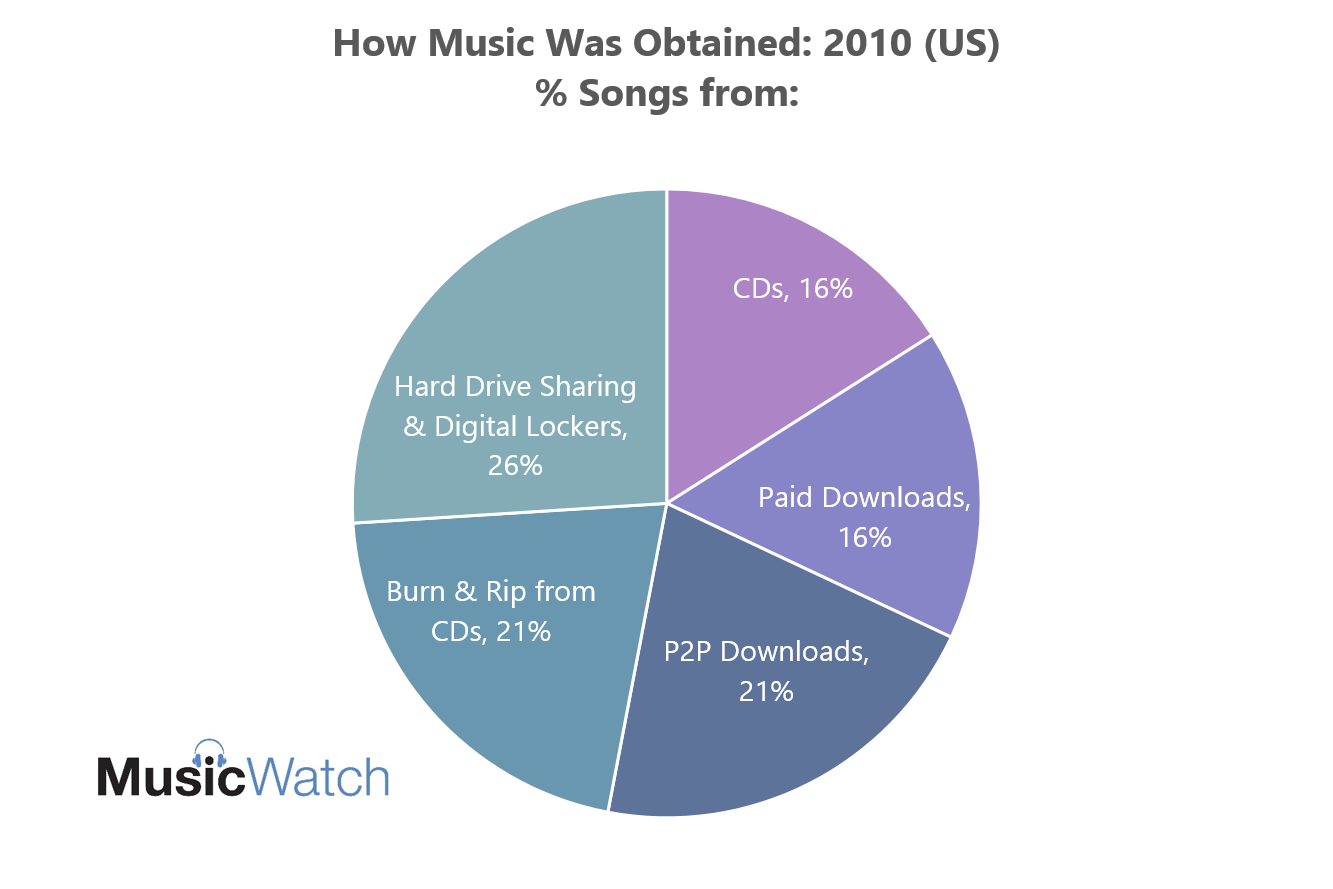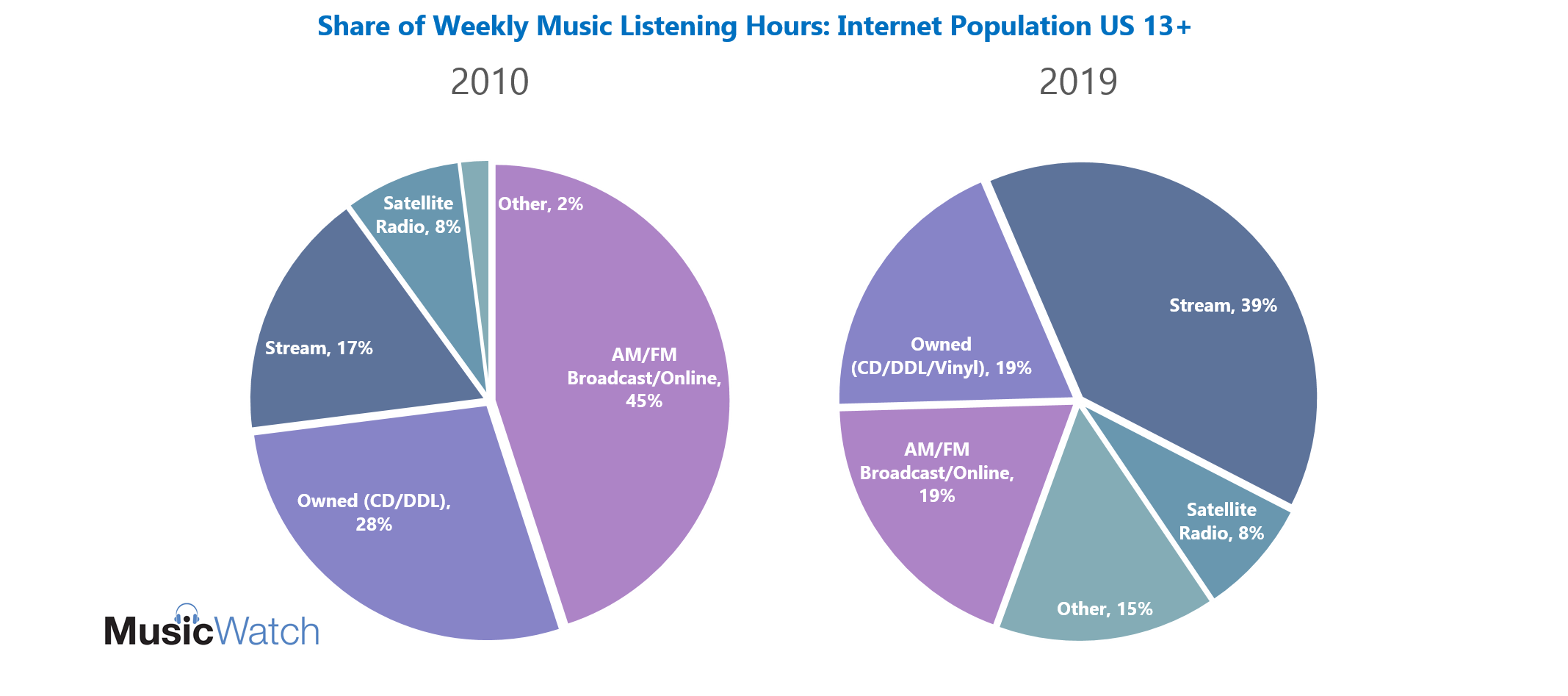At the close of the “aughts” few in the music industry looked back with nostalgia. The next decade appeared uncertain. Tom Silverman, a label executive, visionary and friend would talk about the billions of consumers around the globe who would soon pay for music. But it was hard to see that happening as we welcomed in 2010. Turns out Tom was right.
The music industry experienced a rebound in revenues and investment during the past decade. Both the RIAA (US) and IFPI have reported healthy gains in recorded music revenue over the past three years. This year, 2019, may be the best sales-wise in the US since 2006. The recovery has been an interesting journey; one you won’t think of as you ask Alexa to play your favorite holiday music on your favorite streaming service. But, oh have we changed as music consumers.
In 2010, 68% of the music we acquired was not paid for. Music piracy has been tempered though not extinguished, as nearly 20M stream-ripped a music file this past year in the US.

By the end of the decade we saw the CD buying population fall by more than half, to 34 million buyers. Ringtones were still popular in 2010, even though smartphones were rapidly replacing our flip-phones.
The most popular device of 2010 was an iPod; 60 percent of internet users used a “touch”, a “mini” or a “shuffle”. Today, 40 percent are using a smart speaker, as touch has been replaced by talk.
In 2010, 34 percent owned a smartphone; by 2019, 91 percent were using one. Back then Blackberry’s were competing with iPhone’s for market dominance.
Nothing beats the solitude of listening to music in the car. Ten years ago “aux” jacks were rare and we preferred AM/FM radio and CDs, or “Classic Vinyl” on Sirius. Today, 49 percent are using a music streaming service in the car.
Social media hadn’t quite gripped the nation as it does today; imagine, we didn’t even have a Tweeter-In-Chief! Now, music is one of the key drivers of social media, for discovery, sharing, and increasingly for watching music videos. The number of music fans engaging with music and artists on social platforms has more than doubled – from 29 percent to 62 percent.
Of course, the greatest change in the past ten years has been the shift from ownership to access. Back then we treasured our collections of CDs, and the digital songs on the iPod that we bought, ripped and oh so carefully curated. How our listening habits have changed.
In 2010 only 35 percent of internet users streamed music. Pandora and YouTube were the dominant players.
In 2019, 82 percent stream music. More of us stream today than listen to music on AM/FM radio. In fact, more of us stream than listen to CDs and downloads combined. No surprise the share of how we listen to music has changed so radically:

Though Pandora and YouTube are streaming stalwarts, newcomers such as Spotify, Apple Music and Amazon now account for 36 percent of our streaming listening hours.
In 2010 only 5 million of us paid for a music subscription. In 2Q 2019 we estimated that number had jumped to 68 million. Sirius satellite radio subscriptions grew by 75 percent this decade, on the strength of a portfolio of well curated music stations.
At the beginning of the decade many argued that “music wanted to be free”. This ethos was reflected in falling revenues and troubling consumer acquisition trends. The biggest shift in the past decade has been in the consumer mindset. Thanks to premium access models and ever improving devices, consumers are again paying for music, helping to unlock the music industry’s value. This benefits the consumers themselves as well as artists, labels, and songwriters.
Pretty much everything about music has changed in the last ten years. How it gets made, where we find it, how we listen to it. Even what it means to be a fan.
Everything except the most important thing of all – the music. It’s the music that matters – as it will continue to be ten, fifty, and a hundred years from now.